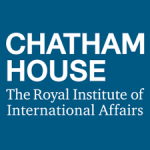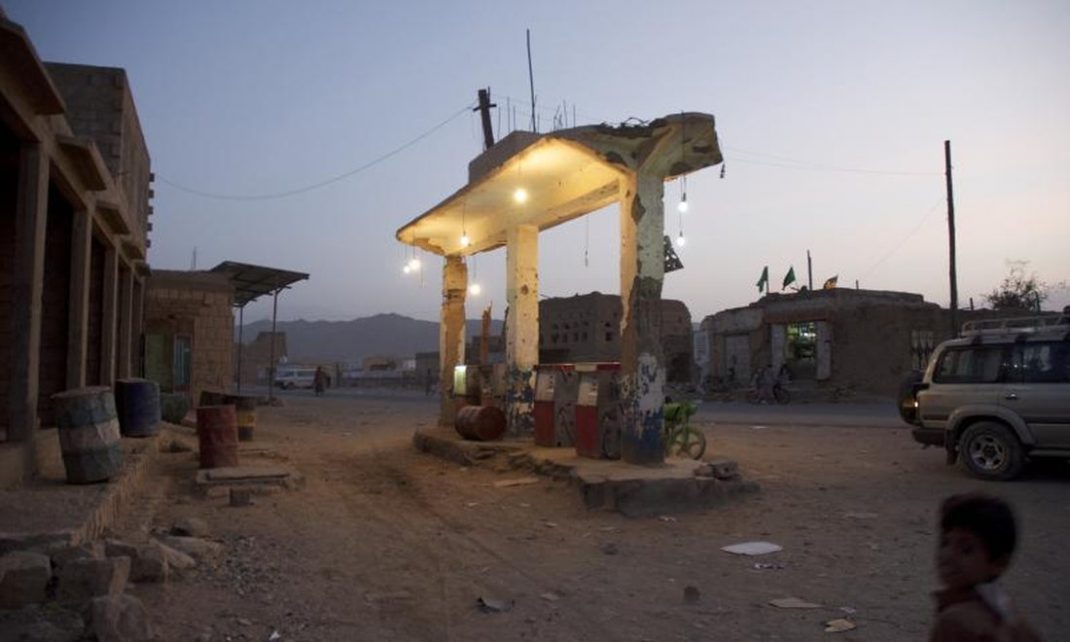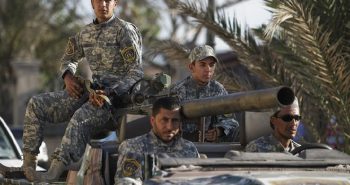Chatham House Report
 This report examines the common economic factors that continue to drive conflict in Iraq, Libya, Syria and Yemen.
This report examines the common economic factors that continue to drive conflict in Iraq, Libya, Syria and Yemen.
It also makes specific recommendations to Western policymakers addressing these types of sub-economies in detail.
PART THREE
Conflict Economies – National Level
In order to examine the development of conflict sub-economies in Iraq, Libya, Syria and Yemen, one must first understand the national context:
most notably the evolution and current status of each conflict, as well as the economic systems that predated armed conflict and have evolved as a result of it.
Here, it is worth noting that all four countries have legacies of long-term dictatorial rule going back to the 1960s.
These legacies have played an important part in shaping current political and economic struggles.
Intensity and status of conflict There are significant differences in population size between Iraq (38.27 million in 2017), Libya (6.38 million in 2017), Syria (18.27 million in 2017 – down from 21.96 million in 2011) and Yemen (28.25 million in 2017).
The extent to which the local population in each country has been directly affected by violent conflict differs markedly.
According to 2016 World Bank calculations, more than 90 per cent of Syrians had been directly affected by conflict. In Yemen and Iraq, that number falls to around 55 per cent, while in Libya it is 10 per cent.
Libya
Following the 2011 overthrow of the regime headed by Gaddafi, Libya’s slide back into conflict in 2014 resulted in the emergence of rival governance structures, a split that remains unresolved.
The Libyan Political Agreement, brokered under the auspices of the UN in December 2015, led to the creation of the Government of National Accord (GNA) under the leadership of a nine-member Presidency Council.
Yet the GNA has failed to become the unity government envisaged.
Members representing the east of the country soon boycotted the Presidency Council, and the internationally recognized parliament failed to ratify the Libyan Political Agreement, meaning that the GNA has no grounding in Libyan law.
Consequently, it nominally owes its continuing existence to support from Western actors – though in reality the GNA has little power to influence events on the ground.
Armed groups remain active and beyond its control.
The most powerful military actor, Khalifa Haftar, leads a coalition of tribal forces and regular army units under the banner of the Libyan Arab Armed Forces (but still commonly referred to as the Libyan National Army or LNA).
Haftar was notably excluded from the Libyan Political Agreement, but has since been elevated to the rank of field marshal and appointed commander of the Libyan Armed Forces by the House of Representatives, the eastern-based parliament recognized by the international community.
The blurred line between state and non-state armed groups further complicates the situation.
Armed groups technically affiliated with state entities often operate autonomously, while competing with other quasi-state actors for control of territory, revenue-generating opportunities and influence.
International efforts to chart a route out of Libya’s governance crisis continue to flounder. Within this context, a low-intensity conflict rumbles on, characterized by continued competitive violence as rival groups seek control of infrastructure, transit areas and state bodies.
LNA forces have undertaken lengthy military operations in Benghazi and Derna, causing thousands of casualties and displacing thousands more.
At the time of writing, the LNA was in the midst of an offensive on the capital, Tripoli, in what amounts to the third outbreak of civil war since 2010.
The development of the Iraqi, Libyan, Syrian and Yemeni conflict economies
In undertaking a comparative analysis of the conflict economies of Iraq, Libya, Syria and Yemen, we began by acknowledging the significant differences in their conflict histories.
There are also major differences between the four countries in terms of development indicators and economic structure.
On the UN’s Human Development Index, a summary measure of average achievement in key dimensions of human development (a long and healthy life, knowledge and education, and a decent standard of living), Libya ranked 108th out of 189 countries in 2017, while Iraq ranked 120th, Syria 155th and Yemen 178th.
While official GDP statistics have limitations, they do offer a useful entry point for comparison of the economies in question and allow a relatively consistent basis for that comparison.
GDP per capita in oil-rich Libya was $5,978 in 2017, while in Iraq it was $5,017. Syria and Yemen do not have natural resources on the same scale. GDP per capita was only $910 in Syria and $1,106 in Yemen in 2017.
These differences have had a significant impact on the nature of the conflict economies to have developed. Oil revenues are the dominant source of rents in Iraq and Libya.
In Syria and Yemen, shortfalls in funding have forced rival groups to adopt a range of coping strategies and seek alternative forms of revenue, most notably from external actors.
Libya’s conflict economy
Libya’s economy is heavily dependent on hydrocarbons: an estimated 96 per cent of state revenues were derived from the sale of oil and gas in 2013, leaving the economy highly vulnerable to fluctuations in international oil and gas prices.
Since 2010, successive governments have replicated Gaddafi-era policies of free or state-subsidized social services but have circumvented legal restraints on public spending to do so.
An estimated 25,000 fighters participated in the uprising against Gaddafi, but 10 times that figure were believed to have received payments as ‘thuwwar’ (revolutionary fighters) as of May 2012.
In 2013, the government confirmed that it would continue making these payments. However, runaway expenditure on state-sector salaries proved increasingly unaffordable: international oil prices were falling and Libyan oil production was hampered by a major blockade of its eastern oil fields.
In response, the state drew upon its foreign currency reserves to cover the deficit between government spending and state revenues.
Libya’s reserves consequently fell from an estimated $115 billion in 2011 to around $75 billion in 2017, according to the World Bank.
Most of Libya’s oil and gas wealth is distributed through state channels, making the control of the state itself the prime target for competing actors.
The effects of the conflict economy are visible in Libya’s 2018 budget, with state-sector salaries accounting for 57 per cent of the agreed budget; this compares with an estimated 17 per cent in 2010, prior to the overthrow of the Gaddafi regime.
However, the increase excludes spending by rival authorities in the east of the country, which official data do not account for. Most armed groups remain on the state payroll, giving the Libyan government the peculiar distinction of funding its own civil war.
As detailed later, the fragmentation of the Libyan state has evolved into a competition for control of state institutions, assets and revenue streams.
Amid the battle among political actors, the Central Bank of Libya (CBL) has put a brake on runaway expenditure of Libya’s foreign currency reserves. However, the independence of the CBL has been constrained by a highly volatile security environment.
Import fraud has become a critical part of Libya’s conflict economy.
The growing disparity between the official rate for the dinar and the black-market rate created substantial opportunities for arbitrage, until September 2018 when a fee was imposed on access to foreign currency (over which the CBL has a monopoly) for the import of goods.
As also detailed in Box 2, import fraud has become a significant revenue-generation opportunity for networks of profiteers – directly involving, among others, armed groups that have coercively and cooperatively exploited privileged access to foreign exchange.
In addition to currency arbitrage, profiteers use fraudulent documentary letters of credit for the import of goods to transfer large amounts of money outside the country.
Sometimes the value of goods imported is less than that documented in the letter of credit, and sometimes no goods are imported at all.
In 2017, the CBL opened LYD11.2 billion ($8 billion) in documentary letters of credit for imports. The extent to which these funds were diverted remains unclear.
The Libyan Audit Bureau claimed to have identified more than $570 million in fraudulent letters of credit in the 11 months from January to November 2016, based on the records it had reviewed, but it has since been denied access to the CBL database which keeps track of letters of credit.
Libya’s generous fuel subsidy regime has been widely abused by corrupt actors and smugglers. Smuggling of refined fuel (not to be conflated with the smuggling of crude oil) has become lucrative in the country’s conflict economy.
Around one-third of refined oil products are diverted from the formal fuel distribution network, according to the Libyan Audit Bureau. In January 2017, the head of the investigations office of the Libyan attorney general told a press conference that fuel smuggling had cost the state LYD5 billion ($3.3 billion) over an unspecified period.
In the past, state subsidies for basic commodities such as wheat and flour had also contributed to cross-border trade in the Maghreb and Sahel, laying the foundation for informal economic activity and the development of illicit trafficking pathways.
Human smuggling and trafficking, which generate the most attention outside Libya, are a key part of the country’s illicit marketplace. On the northwest coast, armed groups have become directly involved in such activities as a result of their physical control of launching points and detention centres.
In other areas of the country, it is very difficult for human smugglers to operate without paying armed groups for protection or submitting to demands for taxes on the movement of people.
Taxing people flows is also a particularly significant form of income for the armed groups in Libya’s south. At their peak in 2016, revenues from human smuggling were in the region of $1 billion, according to Chatham House estimates.
Since mid-2017, however, Mediterranean crossings have fallen significantly, and revenues for human smugglers are likely to have fallen correspondingly.
***
The authors: Tim Eaton, Christine Cheng, Renad Mansour, Peter Salisbury, Jihad Yazigi and Lina Khatib
___________




